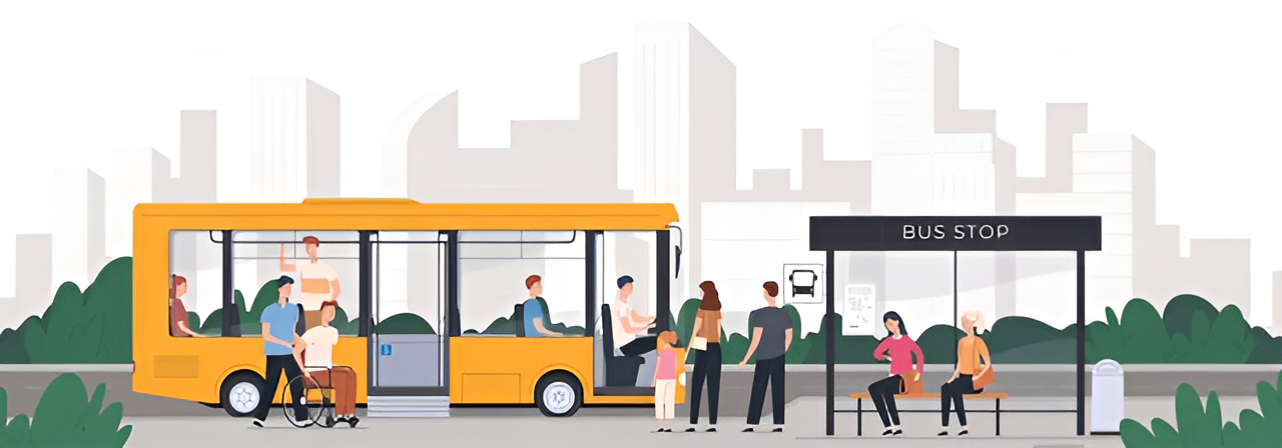As we reflect on the future, it’s a timely reminder of the kind of cities we are building for future generations. The urban spaces we create today will shape the world that future generations inherit, and it is crucial that these spaces are inclusive of all their needs. The rapid growth of cities and urbanization pose significant challenges in various areas of urban development. Vulnerable groups, such as women, children and youth, persons with disabilities, the elderly, the urban poor, informal settlement dwellers, and migrants are disproportionately affected by these challenges.

For years, city planning has considered and focussed on the needs of only a select few, often neglecting the diverse requirements of people with disabilities, children and women. The playgrounds for children have shrunk; the facilities for persons with disabilities are mostly non-existent. The limited access and opportunity for vulnerable sections of the society can be eliminated by reimagining urban planning and designing with a simple rule to first take care of children, person with disabilities, women and other vulnerable sections etc. The future cities should truly work for everyone, enabling all the citizens to enjoy the living.
Key areas like poverty reduction, safety, economic and social justice, education, health, and sustainable housing are highlighted by the Sustainable Development Goals (SDGs). These goals emphasize the need for fair access to opportunities and services by focusing on vulnerable groups. Concepts such as "Leave No One Behind" and "Planning from the Margins" highlight the significance of gender equality, human rights, and disability inclusion in creating inclusive cities.
According to the United Nations Development Programme (UNDP), 80% of persons with disabilities live in developing countries, with 3 out of 5 persons with disabilities being women and disability being more common among children and adults who are poor.
In India, women’s travel is often shaped by "trip chaining," where they combine multiple tasks like picking up children or running errands—into one journey. This results in more frequent, shorter trips and higher travel costs due to multiple fares. The lack of accessible and safe transportation, especially public buses, makes mobility difficult for women, caregivers, and people with disabilities. Poor infrastructure increases risks of accidents and violence, particularly for women and children. Despite women comprising half of urban population, gender is often overlooked in planning cities.
Similarly for children, if the streets are busy or have poor lighting, it hinders their independence. A safer environment allows more freedom and mobility. Various studies suggest that the neighborhood where children grow up plays a crucial role in their development. Spaces that are safe, free from harmful factors such as air and noise pollution can positively shape a child’s memory. It therefore becomes important to look at the city from a child’s perspective.
Public transport in cities often lacks proper facilities for people with disabilities, increasing their cost of living and they are forced to rely on family members, taxis, or private vehicles. For example, during a train journey when there is a change in the platform, a person with a disability faces added difficulties navigating crowds or using stairs. In such situations, they are especially vulnerable. This issue extends to public buildings as well, many of which are not accessible due to the absence of simple features like ramps. While places like airports and malls provide accessible toilets, public transport hubs like railway stations and bus stops often do not.
Children, women and persons with disabilities are often overlooked in city planning, as urban spaces and facilities are not designed with their specific needs in mind. This is due to a lack of inclusive planning processes and the absence of accurate data. As a result, there is a poor understanding of how these groups experience and use urban spaces.
Urban local bodies in India are responsible for managing tasks like socioeconomic development, city planning, and regulation. Nevertheless, these organisations frequently lack the financial independence and resources and inadequate capacity to function effectively. With a few exceptions, such as Kerala and West Bengal, state-level agencies still manage these functions in many states without community involvement. The city planning process is generally not inclusive or participatory, with little input from these groups; the women, children, and people with disabilities are often under-represented in urban planning decisions.
According to the 2016 Rights of Persons with Disabilities Act (RPWDA), all public buildings—both new and existing must adhere to accessibility guidelines. However, these standards are often not enforced due to factors like lack of awareness, accountability, and inclusive planning. Similar to this, state and local procurement procedures frequently ignore gender-sensitive and disability-related factors, which hinder the effective implementation of urban development agendas.
The government is entrusted with carrying out awareness campaigns, sensitization initiatives, and human resource development to enhance the implementation and protection of vulnerable groups. However, there is still a significant lack of awareness, sensitization, and technical capacity regarding the needs of children, women, and persons with disabilities, and how these needs should be addressed in urban development. This issue persists both in the public sector and among private sector stakeholders involved in implementation.
